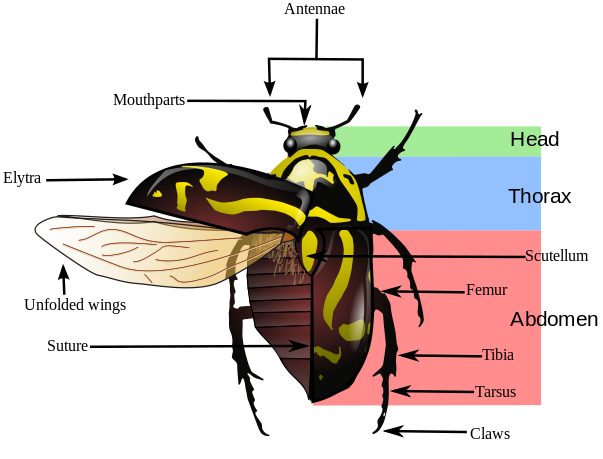Here are the basic body parts of beetles, which I will refer to below. What isn't illustrated in the diagram is a section called the pronotum, or a portion of the front-most surface of the thorax. The shape and size of this feature is often very helpful in the identification of beetles.
Beetle #1: The lime green one on a pencil.
Truly, I do not know what kind of beetle this is. It was a vivid, lovely color, though, and the kids who found it were ecstatic.
Beetle #2: The funny-colored lady beetle. Or, what reminds me of a Colorado Potato Beetle.
Entomologists think that lady-beetles may have spots to warn predators that they taste bad and can make them sick. See, ladybugs make a little bit of poison--just a little--and birds may be able to learn that a spotted beetle equals a terrible taste and illness.
I'll admit, being a girl from a farm, my first thought was, wow, what a funny little, spotted Colorado potato beetle. Thankfully, this guy's pronotum and coppery-brown color set him off as something different. He's lovely, isn't he?
Beetle #3: A metallic-colored ground beetle (perhaps?)
If you Google the colors of this beetle (metallic green and copper-brown), you will get results for the notorious Japanese beetle--but this guy's colors are inverted and his shape is not the same.
Do you know any of these beetles? If you do, tell us about them in the comments! We'd love to know!














